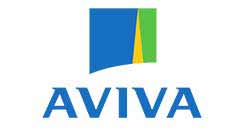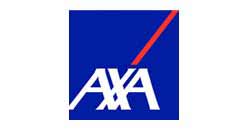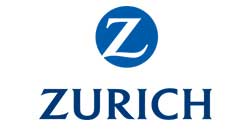
National Insurance is moving up the agenda again in 2025. Some changes have already taken effect, and others are being talked about for the November Budget. For property developers, these shifts matter because they feed straight into project viability, tender pricing, labour strategy and, in some cases, how group structures are set up.
This article explains the confirmed changes in 2025, what is being proposed next, and how both could affect UK property developers. Where relevant, we will link to authoritative UK sources.
First, what has already changed in 2025
From 6 April 2025, three headline measures alter the employer National Insurance picture:
- Employer Class 1 NIC increased to 15%. The rate rose from 13.8% to 15% on earnings above the secondary threshold.
- The secondary threshold fell to £5,000 a year. Employers now start paying NIC on more employee earnings because the per-employee threshold was cut from £9,100 to £5,000.
- Employment Allowance rose to £10,500 and the £100,000 cap was removed.The Employment Allowance can now offset up to £10,500 of an eligible employer’s Class 1 secondary NIC bill each year, and it is no longer restricted by the previous £100,000 liability test. Groups can still only claim once, and single-director companies with no other employees remain ineligible.
In addition, Class 1A and Class 1B NIC rates are 15% for 2025/26. That affects benefits in kind such as company cars, private medical insurance and PAYE Settlement Agreements.
These changes were legislated following the Autumn Budget 2024 and progressed through Parliament in early 2025. The House of Commons Library briefing summarises the package and its expected revenue effects. (House of Commons Library)
Proposed NI for Rental Income
Press reports in late August 2025 suggested the Treasury is considering charging National Insurance on rental income to raise around £2 billion. At present, rents do not attract NIC. Any change would need to be set out at the Budget and legislated before taking effect. It is speculation at this stage, but it is a live idea and therefore relevant for developer groups with build-to-rent arms or companies that temporarily let unsold stock. (The Guardian)
What this means for Property Developers
1) Direct payroll costs will be higher
Property Developers employing site operatives, project managers, QS teams and head-office staff will see higher on-costs. The increase to 15% and the lower threshold both add cost. HMRC’s published 2025/26 rates and thresholds confirm the numbers used for payroll systems. (GOV.UK)
A simple illustration, ignoring any Employment Allowance and specialist reliefs:
- Employee salary £18,000
Employer NIC 2024/25 basis: 13.8% on £8,900 = £1,228.20
Employer NIC 2025/26 basis: 15% on £13,000 = £1,950.00
Change: +£721.80 per year - Employee salary £28,000
2024/25: 13.8% on £18,900 = £2,608.20
2025/26: 15% on £23,000 = £3,450.00
Change: +£841.80 per year - Employee salary £35,000
2024/25: 13.8% on £25,900 = £3,574.20
2025/26: 15% on £30,000 = £4,500.00
Change: +£925.80 per year
For teams with significant numbers of lower-paid or part-time staff, the lower threshold is a key driver of the increase.
2) Off-payroll working inside IR35 costs more
Where an engagement is caught by off-payroll rules, the deemed employer must pay employer NIC and any Apprenticeship Levy. With the employer NIC rate now 15%, the cost of inside-IR35 engagements rises unless rates are renegotiated. HMRC’s guidance confirms that employer NIC is due from the deemed employer under the off-payroll regime. (GOV.UK)
Note that deemed payments under IR35 cannot be included when claiming Employment Allowance, as set out in HMRC’s 2025 guidance. (GOV.UK)
3) Subcontracting via CIS is unaffected by employer NIC, but status risk matters
Payments to registered CIS subcontractors are outside employer Class 1 NIC because they are not employees. That said, employment status remains critical. Misclassification can bring PAYE and NIC liabilities, penalties and interest. Keep CIS compliance tight and status assessments up to date. HMRC’s CIS 340 and CIS guidance set out contractor obligations. (GOV.UK)
4) Benefits in kind now carry 15% Class 1A NIC
If your developer group offers cars, healthcare or other benefits, budget for the higher 15% Class 1A rate for 2025/26 when preparing the P11D(b). HMRC’s 2025/26 rates page confirms the rate. (GOV.UK)
5) Small but important Employment Allowance points
- Single-director companies with no other employees are not eligible. This is common in small SPVs.
- Connected companies can claim only once. Choose the payroll that delivers the greatest saving.
- Deemed employees under IR35 cannot be included when claiming.
6) Possible NIC on rents would affect build-to-rent and holding vehicles
If National Insurance is extended to rental income, returns from build-to-rent portfolios and holding companies that let units would be reduced unless rents or operating models adjust. Groups that temporarily let unsold stock would also need to factor the levy into appraisals. This remains a proposal rather than policy at the time of writing, but it is prudent to scenario-plan. (The Guardian)
Knock-on effects for insurance buying
 Many UK liability policies for contractors and developers are rated using wage roll or turnover, sometimes with definitions that exclude or include on-costs. Increased payroll outlay may therefore change your declared exposures and could trigger midterm adjustments or affect renewal premiums.
Many UK liability policies for contractors and developers are rated using wage roll or turnover, sometimes with definitions that exclude or include on-costs. Increased payroll outlay may therefore change your declared exposures and could trigger midterm adjustments or affect renewal premiums.
Treatment varies by insurer and policy, so confirm with your broker what you should include when you declare wages for Employers’ Liability and Public Liability, and whether employer on-costs like NIC are part of that definition under your policy wording.
Goldcrest Insurance can check this with underwriters and help you avoid under or over-declaration.
Practical actions for developer finance and HR teams
- Re-price live and upcoming tenders. Build the new 15% employer NIC and £5,000 threshold into prelims, staff cost allowances and head-office on-costs. Use the published HMRC rates for 2025/26 to set your payroll assumptions.
- Model the Employment Allowance across your group. If you have multiple connected entities, pick the payroll that yields the maximum benefit and ensure your eligibility holds throughout the year. Single-director SPVs are still out of scope.
- Tighten IR35 and CIS. For off-payroll engagements, ensure status determinations and contract pricing reflect a 15% employer NIC. For CIS, keep registration, verification and deduction procedures robust to avoid status challenges.
- Review benefits in kind budgets. Account for 15% Class 1A NIC on benefits for 2025/26 and set calendar reminders for P11D(b) timelines.
- Scenarioplan for NIC on rental income if you operate build-to-rent, PRS or temporary letting of unsold units. Stress test yields andDSCR with and without a NIC charge so you can respond quickly if the measure is announced at the Budget.
- Check insurance rating bases. Confirm with your broker what counts as “wage roll” or “turnover” under each policy. If payroll declarations need to change, make the adjustments early to avoid surprises at audit.
Frequently asked questions
Does the Employment Allowance now apply to everyone?
No. The allowance increased to £10,500 and the £100,000 cap was removed, but there are still exclusions. Single-director companies with no other employees cannot claim, connected companies can claim only once, and deemed IR35 payments cannot be included.
Will the November Budget definitely add NIC to rent?
Nothing is confirmed. This idea has been reported and is under consideration, but any change would need both a Budget announcement and legislation. Keep an eye on the Budget and plan scenarios in advance.
Do subcontractors increase my employer NIC bill?
Not if they are genuine CIS subcontractors. Employer NIC applies to employees and to deemed employees inside IR35, not to self-employed CIS subcontractors. Status remains the key risk.




